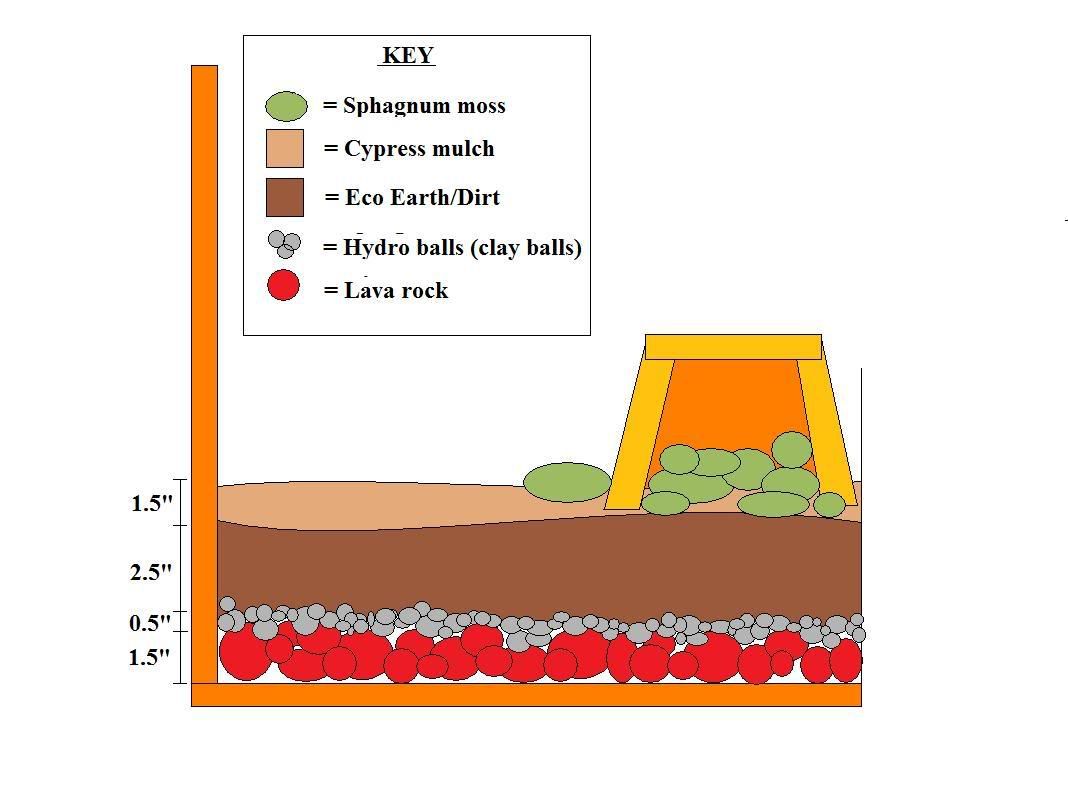This is about how I have my substrate set up (thanks to other ideas), and it has worked out really nice for me. It is set up so you can plant plants direclt into it to have the proper drainage, or just to ensure that water doesn't seep down and sit on the bottom of the enclosure. I highly recommend this setup.
I decided to draw a drawing (not to scale) to explain it best:

PS I don't know why I made the walls ugly orange colors, but anyways that is a hide and the walls in this cross-section
I decided to draw a drawing (not to scale) to explain it best:

PS I don't know why I made the walls ugly orange colors, but anyways that is a hide and the walls in this cross-section